Let’s talk...
About the sense of capability as children mimic the movements of various animals. We can talk to our child about tasks they can now accomplish that they couldn’t before. We can also boost their sense of capability by saying, “Yes, you can!”
About play: The book is interactive and encourages movement and play. We can talk with our child about the games they enjoy and introduce them to games we used to enjoy in our childhood.
Let’s enrich our Language...
The book is rich with action verbs and body part names like arms, legs, feet, neck, etc. We can facilitate their use in our daily lives to describe body parts and movements, encouraging the child to describe their actions.
Let’s explore...
We can explore different sources for information about the animals mentioned in the book: their types, food, and living habits. Also, we can enjoy watching a documentary with our child.
Let’s create...
The book employs the well-known collage technique of the illustrator Eric Carle, creating a beautiful composition of cutouts, fabrics, newspapers, and household materials.
Let’s play...
We can play the “Animal Yoga” game together, mimicking the movements of the various animals mentioned in the book, and adding other animals!
نتحادث
قبل فتح الباب: نطلب من الطفل أن يحزر من خلف الباب حسب اللون أو الصورة. نطرق الباب ونفتحه معًا، ثمّ نتأمّل الرسمة ونسأل طفلنا: من خلف الباب؟ ماذا يفعلون؟ نسمّي الشخصيّات والأغراض وما تفعله.
حول المشاعر: نتحدّث مع الطفل عن مشاعر الشخصيّات. مثلاً، يمكن أن نسأله: كيف شعر الأرنب عندما أكل الجزرة؟
حول الرغبات: نسأل طفلنا عن اللون الذي يحبّه، ونبحث معه عن أغراض له نفس اللون.
نثري لغتنا
نستكشف معاني أفعالٍ وردت في الكتاب، مثل: يقرع، يقضم، تفرك، ثم نمثلّها معًا. من الهامّ أن نستخدم هذه الكلمات مع طفلنا في حياتنا اليومية.
نوسّع معارفنا
الألوان: نختار مع طفلنا لونًا من ألوان الأبواب، ونبحث في الغرفة عن أشياء لها نفس اللون ونسمّيها.
نعدّ معًا: نمسك بإصبع طفلنا ونتتبّع الحيوانات في الصفحة ونعدّها. قد نسأله: كم أرنبًا ترى؟ كم قردًا؟ ثمّ كم إصبعًا في كفّة يدك؟ كم عينًا لك؟
نلعب
نقلّد أصوات الحيوانات الظاهرة في الكتاب مثل القرود، أو الأشياء مثل الطبل. نصغي إلى الأصوات المختلفة حولنا، سواء في البيت أو خارجه، نسمّيها ونقلّدها.
حول الكتاب
المربّية العزيزة،
اللقاء الأوّل بين الطفل والكتاب هو خطوة أساسية في تعزيز حبّ الكتاب والقراءة. قبل البدء بسرد القصة، من المهم إتاحة الفرصة للأطفال للتعرف على الكتاب: النظر إلى الغلاف، تصفح الصفحات، والتفاعل مع الصور. هذه المرحلة تساعدهم على تكوين تصورات أولية عمّا سيكتشفونه، ممّا يعزّز انتباههم واستعدادهم للاستماع.
يأخذنا هذا الكتاب في رحلة تفاعلية ممتعة مع الأطفال، حيث يعرّفهم على مفاهيم أساسيّة مثل اللون والعدد، معزِّزًا استيعابهم لها من خلال تفعيل حواسهم المختلفة، مثل: النظر، السمع، واللمس. ويعتمد على لغة بسيطة وسليمة تسهِّل الفهم. إضافةً إلى ذلك، يُثري القاموس اللغوي للأطفال عبر تعريفهم بأسماء الحيوانات، الأدوات، والأفعال الواردة في القصّة، مما يوسّع مفرداتهم ويعمّق معرفتهم بالعالم من حولهم.
نستقبل الكتاب
نستقبل الكتاب معًا:
ضعي صندوق الكتب في وسط الغرفة، واعرضي الكتاب أمام الأطفال، افتحيه وأغلقيه لتوضيح طريقة استخدامه. بعد ذلك، وزّعي الكتب على الأطفال.
نتصفّح الكتاب –
يحتاج الأطفال إلى وقت لاستكشاف الكتاب والتعرف عليه، عن طريق لمسه وتقليبه. دعي الأطفال يلمسون الكتاب، يتصفّحون صفحاته، وينظرون إلى كتب زملائهم. يمكنك طرح أسئلة مثل: “ما هذا؟ ماذا يوجد بالداخل؟”
نقرأ معًا –
نقرأ الكتاب في مجموعات صغيرة في مكان هادئ، ونستمع إلى أغنيته، ثم نعيد القراءة والاستماع مرات عديدة. يساعد تكرار القصة على تعزيز تفاعل الأطفال معها، وترقّبهم للكلمات والصور المألوفة، ممّا يمنحهم شعورًا بالأمان ويعمّق تعلّمهم.
نتحادث
قبل فتح الباب، نطلب من الطفل أن يحزر من خلف الباب حسب اللون أو الصورة. نطرق الباب ونفتحه معًا، ثمّ نتأمّل الرسمة ونسأل الأطفال: من خلف الباب؟ ماذا يفعلون؟ كيف يشعرون؟ نسمّي الأغراض والشخصيّات، وأفعالها ومشاعرها.
موسيقى
موسيقى:
نستمع إلى أغنية الكتاب من خلال مسح الباركود في الغلاف الخلفي للكتاب. وفي كلّ مرّة نتوقّف عند جملة “ندقّ الباب”، وندقّ مع الأطفال على صندوق أو أي سطح قريب، أوّلًا باستخدام اليد، ثم الكوع، ثم القدم. هذا يساعدهم على التفاعل والتعرّف على أجزاء جسمهم، واستكشاف الأصوات المختلفة التي يمكنهم صنعها.
الوعي النغمي
ندقّ كل مرة بإيقاع مختلف: سريع أو بطيء، أو بعدد دقّات مختلف: ندقّ كثيرًا أو ندقّ قليلًا. يمكننا الانتقال إلى التصفيق لجعل النشاط متنوّعًا.
نثري لغتنا
نركّز على إثراء لغة الطفل بالأفعال، عن طريق طرح الأسئلة: ماذا يفعل الأرنب؟ ماذا يفعل نونو الصغير؟ بإمكاننا بعد الإجابة على السؤال أن نُمثّل الفعل معًا.
صندوق المفاجآت
نحضّر صندوقًا نملأُه بأغراض مختلفة، يدقّ كلّ طفل على الصندوق، ثم يمدّ يده ليُخرِج غرضًا ويسمّيه: “سيارة زرقاء!” نستطيع أن نوسّع الجملة عن طريق تكرارها مع إضافة كلمات جديدة، مثلًا: “سيارة زرقاء، سيارة زرقاء سريعة”. تساعد هذه اللعبة على توسيع القاموس اللغويّ وتعزيز بناء الجمل.
نكتشف الألوان
نضع أطباقًا تحتوي على ألوان مختلفة، يغمس كلّ طفل يده في اللون الذي يفضّله ويسمّيه. بعد ذلك، يضع كلّ طفلين كفّيهما معًا ويفركانهما بلطف ليمتزج اللونان، ثم نسأل: ما هو اللون الجديد الذي نتج؟
Let’s talk...
About the Gift: What do you think about “Leo’s” gift? Did you like it, and why? What gift would you want for your birthday? And why?
About writing experience: We can share our memories of moments when we discovered we could write with our child. For example: when we wrote our name for the first time, and when we drew shapes and wrote numbers. We can talk with them about similar experiences they’ve had, and perhaps we can take their hand and writetheir name together.
About animal illustrations: We might ask: Which animal accompanies “Leo”? What other animals are mentioned in the book? What are the commonalities between the children’s world and the animals’ world in the story?
Let’s enrich our language...
Describe pur environment: We can go out with our child to the house yard or balcony, observe a scene, then ask our child to describe it with their eyes closed. We can encourage them to use precise descriptions and actions.
Create a story: our child can tell a story about each drawing, and we can encourage them to express their thoughts and feelings, to enrich their language and build bridges of communication and love between us.
Let’s search for names of animals that belong to the big cat family, like Leo.
Let’s create...
We can dedicate a notebook for writing or drawing family memories. We can enjoy browsing through it from time to time in an enjoyable family session!
Family collage: One family member starts by drawing a shape, and others add lines and shapes to create an amazing collective artwork!
Let’s talk...
About the child’s opinion:
Mr. Round and Mr. Square see things in contrasting ways. We can ask our child: Are things really contradictory? How do you see it? Do you think the dog is first or last? Is the car really moving away or coming closer? We can encourage them to use expressions like “it depends on” or “according to,” to stimulate seeing things from multiple angles.
Similar experiences: we can ask our child: Have you ever disagreed with a friend?What was that like?
Let's stimulate thinking...
We can look at household items and describe them from Mr. Round’s and Mr. Square’s perspectives, for example: I see a wall behind the TV, or a TV in front of the wall. Let’s describe other items using different expressions like: in front-behind, above-below, or any other appropriate expression.
Let’s enrich our language...
The story is full of opposites, such as: near-far, first-last, bright-dark, and others. We can find them and use them to describe what’s around us.
Let’s create...
We can draw several circles on one paper and several squares on another, then create shapes and drawings from each circle and square.
Let's play...
We can compete to collect the largest number of items in our house that contain different shapes: circle, square, dots, parallel lines, and others.
Let’s talk...
About pirates and captains: We can ask our child: Is Salman a captain or a pirate? What’s the difference between them? Can he be both?
About flexible thinking: We can ask our child: Have you ever understood something in two different ways? Or have others interpreted it differently?
About similar experiences: We can askour child: Have you ever gone on a journey or had an adventure where you discovered something new? Where and what did you discover?
Let’s enrich our language...
We can learn new words like: mast, cabin, dozen, gang, amber, and others. We canlook for rhyming words in the text like: qursan (pirate), qubtan (captain), qumsan(shirts), sa’dan (monkey), farman (decree) and others.
We can try to understand their meanings and search for new words with the same rhythm.
Let’s create...
We can dress up as pirates, draw a treasure map, and go “pirating” together on an exciting search journey around and inside the house!
Let’s explore...
Characters: We can search for stories about famous maritime figures mentioned in the text, like Magellan, and others not mentioned, like Ibn Battuta, Khair ad-Din Barbous,and Sinbad. We can learn about researcher Jane Goodall and the fictional character Tarzan.
The Map: We can examine the map below and follow Pirate Salman’s ship route and explore the cities he visited: Who are their inhabitants? What is their traditional dress and folk food?
Let's talk...
About pet care at home: Why is it important for the child? Who takes care of it, and how?
About the feelings of the child in different situations before and after Zaatar’s disappearance. What do her drawings tell us about her feelings?
About asking for help: When and whom do we turn to for help? Let’s remember situations where we supported our child.
About friendship: Zaatar is Dan’s friend. Who are our friends and what do we like to do with them?
Let’s enrich our Language...
We can suggest suitable names for a pet we want to raise. Why did we choose these names?
We can imitate the sounds of animals we know and learn their names like the meow of the cat and the bark of the dog, among others.
Let's play and have fun...
We can enjoy playing group games with our child, such as Blind Man’s Bluff, and the “Hot and Cold” game.
Treasure hunt: We can hide an object in one of the places in the house and give our child clues about the location, for example: there are plates and spoons there. We develop the child’s ability to describe by suggesting the use of different words, such as: above, inside, and describing objects and places. We then switch roles.
Let’s have fun together with role-playing games, such as: I’m the customer and you’re the seller, or the father and the child, and others.
Let's create...
We can prepare a comfortable and warm place for the household pet or neighborhood cats with our child.
We can allocate a place with our child to feed the neighbourhood cats. What food do we provide? Who do we share with from the neighbourhood?
Let's explore...
We can search for information about animals we want to learn about, and we can also spend an enjoyable day visiting the zoo.
Let’s talk...
About plot: We can observe the details of the illustrations, and encourage our child to describe them, follow the events, and make connections. We notice changes in the sea scene, the girl, and the birds, describing the girl’s feelings each time.
About personal experiences: Have we experienced similar feelings? How and when? We can recall our journeys, adventures, moments, and various experiences.
About seas and nature: What does the sea remind us of? Which seas have we visited? What other natural places do we know? We can compare them: how are they similar or different?
Let’s enrich our Language...
Description and comparison: We can describe the girl’s features and the feelings she expresses. We can compare them in each scene.
Birds: We can pay attention to the birds in the drawings, think about their relationship with the girl, and learn about their characteristics and advantages.
Names: We can suggest a name for the girl, think about our own names, who gave them to us? We try to remember the stories and meanings behind our names.
Actions: We can observe the girl’s movements and name them. We can also perform similar actions.
Let’s explore...
Seas: we can visit a nearby sea, look at the sunset or sunrise, observe the waves, and enjoy the beach sand. We can look for scientific information: How are waves formed? What marine life lives in the sea and what distinguishes them?
Nature: We can choose a natural place for a shared We can visit it, appreciate its details, listen to the sounds, get to know the creatures, describe and play together. We may search the internet and encyclopaedias for information about the place before or after the visit.
Let’s create...
Paintings of nature: we can collect materials from nature during our outing and create paintings to decorate our home. (Paintings from seashells, mountain stones, or garden leaves).
Our book: we can document our moments with pictures and compile them into a book for the story of our enjoyable journey. What do we want to add to it?
Let's talk...
About the child’s feelings: We can read the story with our children several times. We then follow the illustrations and discuss them as an expressive panel and talk about the feelings of both the child and the grandfather during their joint activities.
About the relationship with the grandfather: We can talk to our child about the things he loves about his grandfather and grandmother, and the things that sometimes bother him.
About family relationships: The book presents the child’s experience of spending enjoyable time with her grandfather. We can talk to our children about the shared activities that our children love to do with their grandparents, aunts, uncles, and extended family.
Let's create...
Let’s prepare an album of the most beautiful moments with family members and relatives.
Let’s plan and create a house for our favourite pet with the help of grandparents.
Let's communicate...
Let’s visit our grandparents and initiate a fun activity together, such as gardening, going for a nature walk, playing chess, and more.
Let’s Talk
- During the first reading, we participate with our child as we follow instructions together. This helps our little one to understand actions through our embodiment and imitation.
- About emotions: we can ask our child how they felt when we read the book and played together, and which books they love and prefer.
- About playing together: we can ask our children which activities and games they like to play together.
Let’s Create
Children learn the art of pointillism and create paintings using this technique. We can use felt-tip pens, cotton swabs, and paint.
Let’s Enrich our Language
- The book is rich in vocabulary and linguistic concepts, touching, pressing, softening, illuminating, and more. We can explain these to our children during reading and use them in daily life.
- We can recall encouraging words from the text and try to use them in our daily lives.
Let’s Play and Have Fun Together
We can play “The King Says:” participants must follow the instructions preceded by the phrase “The King Says.” For example, if we say, “The King says jump to the right,” we jump together. If we say “Jump to the right” only, we don’t jump. We can take turns as a
Let’s Explore
The book presents the art of color blending and mixing. We can mix colors together and learn about new colors.
Let’s talk...
About the problem: in our first reading, and before we reach the solution, we should ask our child the following: the mother asked Alfie to find the solution to his problem, “How could he get the cake in a better way?” What do you suggest he should do? We can continue reading and ask our child again, what are the solutions suggested by Alfie? And what is the appropriate solution?
About our feelings: We can trace the drawings and talk about Alfie’s feelings. We can ask our children: How did Alfie feel when he saw his mother making cakes? How did he feel when she refused to give him the cake and asked him to think of a way to get it? How did he feel when he couldn’t find the solution? How did he feel at the end of the story?
About our attempts: Alfie tried several times and various ways to reach the solution. We can ask our children: Have you ever tried to get something or do something numerous times? How many times have you tried? When do we feel discouraged? how many trials does it take before we give up? What do we do when we are frustrated?
About problem solving: We can have a conversation with our child about similar situations in which they must find solutions to situations or problems. We can ask them: Did you encounter a problem? what is it? How did you feel? How many times have you tried? How did you find the solution? Who helped you? If you didn’t find a solution, how did you feel? How did you deal with the feeling of frustration?
Interaction between mother and child: The mother prepares cakes for Alfie and the rest of the family. We can talk with our child about what is happening in our home: What are the things that the mother and father do for us? What are the things you like to do together?
Life and social situations: Alfie’s mother portrayed an advanced model for dialogue and for giving and taking, by demonstrating it in her behaviour. We can have a conversation with our child about what is happening in our home. We can ask them: What happens when you do something different from what our mother or father wants? How do you behave? How would you like them to talk to you?
Let’s communicate...
We can spend quality time together with our child, preparing a cake, or preparing a communal meal.
Let’s enrich our language...
Our story contains emotional, mental, and social words, such as: to love; to desire; frustrated; thought; an idea occurred to him; an idea popped into his head; thanks; please; sorry. We should use these words in everyday context.
Let’s act and create...
We can choose different social situations, and with our children, we can familiarize ourselves with mild expressions that are appropriate for these situations. Together, we can act out the appropriate behaviour and use the appropriate social expressions – for example: a birthday party; visit to a patient; an apology; entertaining a guest; being a guest; when we need help…
We can discuss...
About the title: We can discuss the title of the story “The Cow that Laid an Egg,” and we can ask the children: Does the cow lay eggs?
We can ask...
About the concept of the unique and the special: We can ask the children: What is meant by unique and special? What are things that are common and normal? What are the special things that distinguish us and that we do differently? When do we feel special? Has anyone given us that feeling? Do we do things that make others feel special?
About trickery...
About trickery: The chickens used a trick to support the cow. What is the trick? Why did the chickens use it? What did the characters in the story think about it, and how did each of them feel? We can follow the drawings and talk about them. We can ask the children: Did they ever use a trick? How? Why? How did they feel?
A Fun night...
“A Fun night” – we can arrange a family session, grab a book of jokes, laugh and have fun together. We can also come up with some funny jokes and stories.
We can write...
We can write a funny book adapting the collage style by using newspaper clippings and colors to create funny scenes, such as sticking a chicken’s head on a cat’s body – for example.
We can browse...
We can browse the encyclopedia, or the Internet, and search for different animal species and how they breed.
We can look...
We can look for videos showing the stages of egg hatching. We can watch it and talk about it with the kids.
Let’s have a conversation...
About the different points of view: We can follow the arguments of the ferret and the bear and compare their points of view on why each is entitled to the third piece of mushroom. We can ask our children why the ferret thinks that he deserves the third mushroom, what the bear thinks, what the fox did, and how they felt then. We can even suggest a solution to their problem.
About justice: the ferret and the bear both mentioned the word “justice” in their arguments. What does justice mean? When did you feel injustice? What does it mean to act justly?
About tasks in the family: The bear and the ferret shared errands in their house. With our child, we can discuss the division of tasks within the family and the roles of each individual.
About sharing: Both the bear and the ferret found it difficult to share the third mushroom. We can talk with our child about the things they share with others, and about other things that are difficult for them to do. For example, how do they feel if they share a game they like with their friend or sibling?
About spending time together: We can talk about things we do in our family to show our love and concern for each other, such as sharing household chores, preparing a favourite meal, or doing a fun family tradition.
About argument and persuasion: We can choose a topic with our child, and we can discuss it from both sides, the argument and the counterargument, in order to develop our child’s ability to think and express themselves. For example: holding a birthday party, going on a journey, buying a new game – or any other topic of our choosing.
Let’s act...
We can choose a situation in which our child finds it difficult to participate. We can take turns and act it out. Then, we can talk about the feelings and desires of each one of us, about the difficulties we faced and suggest ways to deal with them. We can support our child and show them that sharing means caring for the other and showing their affection for this person.
Let’s create...
The ferret prepared a delicious meal of mushrooms in the story. We can prepare a shared meal with our children and prepare it together. We might also want to explore berry-based recipes.
Let’s have a conversation...
-About ways of expressing love: The girl expressed her love for her mother by surprising her and making biscuits for her. We can talk with our child about ways to express love, and we ask them: How can we express our love for the other? We can suggest several ways, such as expressing love with words or cards, or with body language such as hugs and giving kisses, or with actions such as helping and preparing surprises, as the girl did.
-About sympathy: the child was very sensitive to her mother and sympathized with her, so she did not want to wake her from her sleep. We can talk to our child and ask them how the mother feels about this behavior, and we can also ask them: How is it possible for the mother to be sensitive and sympathetic to the child? And how can a child be so towards the parents? We can give examples from our lives.
-About initiative: the girl took the initiative to prepare biscuits for her mother. The mother appreciated her child’s attempt and praised her. We can talk about the initiatives that our child has taken for the other (for example: for members of their family), or the initiatives that they can generally take for the other. We can also deal with their feelings and the feelings of the other. We should praise and encourage them.
-About flexibility and dealing with problems: Although the child made playdough instead of biscuits, the mother did not get angry or complain, on the contrary; She encouraged her and explained her she made playdough. We can talk with our child about experiences that did not go as we wanted or expected. How did they feel? How did they act? How did the parents act? How did we react?
-About surprises: Children love surprises and enjoy receiving and preparing surprises for their parents. You may want to decide with your child to prepare mutual surprises; Like making them a favorite dessert or inviting someone they love to your house.
Let’s share...
-We can prepare a cookie with our child, or a plate of salad. We can share the process of preparation together. We can also name the objects and the verbs. we taste; touch, have fun together.
Let’s talk...
-About reality and fiction: We can browse the book with our child and think about the drawings. We can then ask our child to guess: Which object did the box turn into each time? We can ask our child if they think Rabbit really believed that the box is a spacecraft, a robot or a mountain.
-About the color of drawings and about voices: The book contains two voices; The voice of the adult clinging to reality, and the voice of the creative child. The two voices are featured through the different colors of the drawings. We can trace the book’s drawings, paying attention to their colors, and try to distinguish between those that Rabbit imagines and creates, and those that speak to him, and we can ask the child why they think the painter chose to color these pages.
-About childhood toys: We can share our memories of the toys we made and the things we turned into toys with our children, and we can ask them about the toys they like and enjoy.
Let’s play...
-Let’s imagine and guess! We can sit in a group, and in turn, each one has to “act out” an object (cup; cat; lion; hammer), and the others have to guess what the object is, and so on (you can also time the game).
-The magic of imagination: We can prepare various objects (a hat, a cooker, a scarf…) and find many uses for each of them, or we can imagine them as other objects, like Rabbit did.
Let’s create...
-Imagination Box: with our children, we can get a box and simple materials, and we can build a spacecraft, a robot, or any idea that comes to our mind, from the pages of the book or from our imagination.
-The “this is not” book: We can write a new book with our child that draws from the idea of this book, such as: “This is not a line” or “This is not a cloud.” Let’s think and create!
We can read...
We can read the title of the book together, and talk about the meaning of the word “shy.” What clues do we have of Crunch’s shyness on the cover?
The book allows...
The book allows us to sing with our child and address Crunch in different tones of voice. It also helps our child fall asleep quietly after finishing and closing the book.
How else can we...
How else can we help Crunch to feel more comfortable and communicate with us?
Many of us...
Many of us – old and young – are naturally shy people, and in some social situations we feel a desire to “disappear.” We can design a “disappearing cap” with our child and take turns wearing it. We can then talk about situations in which we feel shy. What can help us deal with our shyness in these situations?
How do we build...
How do we build a friendship with a shy child in kindergarten? We can encourage our c- We might like to paint on stones, as Crunch did. Together, we can search for the right stones and the right colors.hild to think about practical ways to do so.
The repetitive sentences...
The repetitive sentences in the text allows the child to take a greater part in telling the story. We can stop reading and let the child enjoy repeating these sentences: “What is this noise? It seems that the little bunnies have gone out of bed” or “at night we do not ride the rails nor play with the train…”
Why do bunnies play...
Why do bunnies play at bedtime? Maybe they find it difficult to fall asleep, or to leave their toys It
We can chat...
We can chat with our child about sleeping rituals that he loves (for example: reading a bedtime story or playing together with a toy they love). We may wish to share with them what we like to do in the evening to relax after a long day. This conversation helps reinforce the child’s sympathy and understanding of the parents’ need to rest and to finish their own affairs after the children sleep.
Good night, sweet dreams...
“Good night, sweet dreams,” the parents tell their little bunnies. What pre-sleep greetings do we use in our family? Which do we use in the morning? It is fun to create special greetings with our child that we can exchange with the rest of the family.
We can use...
We can use the drawings to keep track of the games that the bunnies play. Which games does our child like? And which ones do they want to play with us? Let’s play together!
guess the soun
The first time we read the book, we can stop on the last page (16) and encourage our child to guess the source of the sound.
We can take a tour...
We can take a tour around the house, and listen to the sounds emanating from each room, and try to define it: is it a rattle, a tick, or a buzz? We can also listen to the voices outside: How do the sounds coming from outside differ from the ones inside?
We may search...
We may search with our child for other items in our near environment that complement the song of Zena, such as: brrring, brrring/…it rings. We may add new sounds that match the objects we find, and form a choir like Zena’s!
We can suggest...
We can suggest to our child to accompany Salam on her visit to the Words Market. What words would they buy from the joy store, from the fantasy store, and from the dream store?
We can chat...
We can chat with our child about their own store in the Words Market. Which words would they offer to Salam? Perhaps our child would like to draw the store, and write some of the words that they sell.
It is interesting...
It is interesting to play with our child the “word connotation” game. We can say simple words to them, such as: bike, vacation, ice cream, etc., and ask them to say what they think about when they hear the word. This game explains to the child that words have meanings related to our life experience, and that is why they differ from one person to another.
Each of us has...
“Each of us has a story/it begins with once upon a time.” We can encourage our child to create their story, in which they or others may be the protagonist. It would be great if we helped our child write the story in a small notebook for them to draw and share with family and friends.
Visiting a popular market...
Visiting a popular market in our town can be an exciting physical and social experience for all children. The market is full of the sight, smells, and tastes of various goods, and in it, the child experiences the processes of negotiation, buying, selling and advertising. What does our child like in the market, and how do we prepare to visit it?
Read the book...
Read the book together and observe the drawings. Explain to your child the meaning of unknown words, such as carpentry shop, India, lantern.
Chose some words...
Chose some words from the book, such as cup, Summer, cucumber, etc. Encourage the child to think of similar words that rhyme with words from the book. Help the child to construct a sentence that links the two rhyming words.
The child may...
The child may desire to add an additional sentence or more on the book’s last page or to draw some pictures.
"Humanizing" objects...
“Humanizing” objects or animals or attributing feelings to them is part of the fun in rhyming games. Observe the drawings with the child and talk with him/her about what indicates feelings in the drawing (like the happiness of the oil bottle for winning, or sleepiness of the tongue.)
Review with the child...
Review with the child the sequence of events before and after the cat showed up in the kitchen. Discuss the feelings of the mice in the two periods: what has changed?
Observe the little...
Observe the little details in the book’s drawings: which elements convey an atmosphere of joy and security that prevailed before the cat appears, and which of them convey an atmosphere of fear and caution after the opponent enters?
Mother Mouse...
Mother Mouse warns her little ones and prevents them from entering the kitchen. Discuss with your child the motives of Mother Mouse. You can choose a similar situation that the child encounters in the family or kindergarten environments. Why do adults sometimes prevent children from doing certain things?
The mice family...
The mice family gather to discuss the problem of the cat. Imagine that you become tiny and enter the mice hole and listen to their argument. Which family member participates in the argument? How the decision to hang a bell around the cat’s neck is taken? Discuss decision-making methods in matters that relate to your family life, such as going on a trip, or making improvements around the house, etc.)
Ask your child...
Ask your child, “who will hang the bell?” and encourage him/her to think of a solution to help the mice.
Where do houses hide?...
Where do houses hide? Go out with your child on an exploratory trip to find other tiny homes around you in which small creatures live—for example, ant colonies and bird nests.
"Jingle bells"…
“Jingle bells”… search for bells you hear in your near environment—for example, the doorbell, the church bell, or the clock alarm, etc.
Make nice bells...
Make nice bells from disposable paper cups, colored ribbons, and big beads as bell clappers. Use different dyes and stickers to decorate your bells.
Read together with...
Read the dialogue...
"let's reenact wha...
“Let’s reenact what the hands do!” Change roles by reenacting one of the organs. Acting helps the child in understanding and internalizing the meaning of a verb. This way, the child will reuse the verb to express his/her own experience.
The body organs...
“The body organs tell their own story!” Ask the child to lay down on a big cardboard. Mark the lineout of the entire child’s body. Help the child draw the body details while he/she talks on behalf of the organ about what it has accomplished today. For example, “I am the nose, I smell and breathe.”
Our body organs...
Our body organs work hard for us. So, how do we take care of our organs? Discuss with the child daily care routines of body organs.
Grandmothers and grandfathers...
Grandmothers and grandfathers have a special place in most children’s lives. And the grandparents’ house has its unique smells, tastes, and distinct sights that inhabit the memory of children when they grow up. We can talk with our child about the things they love in their grandparents’ home or in the house of any other person who is close to the family and to our child. Is there a corner in the house that they favor? What do they like to do in their grandparents’ house?
The grandmother in...
The grandmother in the story expresses her concern for her grandson in different ways. We can talk with our child about their interactions with their grandmother or grandfather and how they express their love to each other. For example, preparing a favorite dish, buying small gifts, or telling the grandchildren interesting stories. We can also talk about what we can do to express our concern for our grandmothers and grandfathers.
Do you remember...
Do you remember the hilarious “broken phone” game? The family members sit in a circle, and one of them quickly whispers a word in their neighbor’s ear. The second has to whisper what they heard in the other neighbor’s ear…and so on, until the whispered word reaches the last person in the circle, just to discover that what they heard has nothing to do with the original word!
We can test...
We can test various methods to enhance the delivery of sound to a far location, such as encircling the mouth with both hands, and ways to improve the hearing of sounds, such as tilting the outer ear forward. Are there other methods?
Together, we can...
Together, we can design an amplifier from household items, such as: a cardboard tube, metal foil, or paper cups. We can test a number of amplifiers from different materials and compare them: which sounds best?
If your friend...
If your friend is good as honey, don’t lick him all We can go over the situation without mentioning the idiom, and have a small conversation with our children regarding the child’s desires in the story: are they logical? Can the mother give the child everything he/she wants? We can read the idiom and look at the drawing that describes it: who is the honey in the drawing? What does the drawing tell the child?
The camel limped...
The camel limped because of his lips. Children sometimes try to make any excuse to avoid going to school. It is important to listen carefully to what the child says directly, and try to understand if there is an indirect call of distress because of something the child is going through. We can go over the situation, without reading the idiom, and have a conversation concerning the reasons why the child in the book may not want to go to kindergarten. We can take a look on the camel drawing: does his swallowed lip forbid him to walk?
The pot found...
The pot found its cover. We can talk with our children about the 2 friends in the story: do they love the same games? We can take a look at the drawing and have a conversation about the similarity between the pot and its cover to the two friends in the story. We can have a conversation about our friends who can be a “cover to our pot”: what do we like to do with them?
A hair grew on...
A hair grew on my tongue We can check our tongue: can hair grow on it? Can it grow one day? We can read the situation that talks about the mother who asked her child, several times, to clean up his room: What happened to her tongue as a result of repeating the same sentence? We can imagine different things that might happen to her tongue. We can think together: What can the child and his mother do, so “hair won’t grow on her tongue”?
When reading the book...
When reading the book for the first time, you might want to illustrate with your body the activity verbs mentioned in the book, i.e. bending, spinning, etc. It will help the child to understand the verbs.
The author uses...
The author uses verbs to talk about dancing (bend down, spin around…), and draws parallels between the children’s body and the movements, or nature that surrounds the child (the tree, silk curtain and the butterfly…). We can encourage children to look around at what surrounds them and to add more things that can look like our body in motion.
We might want...
We might want to dance with our children to songs they like in front of the mirror, and explore new moves we can do with our body! What verbs describe these moves?
When do we dance?...
When do we dance? With whom do we like to dance with? This is an opportunity to have a conversation with our child, regarding the feelings that make us dance and the social occasions that we dance at.
The last illustration...
The last illustration in the book shows a boy sitting on a dancing wheelchair, an interesting choice by the illustrator. We can talk about the different ways of dancing that people around us do according to their abilities (such as the old grandfather who uses his stick to dance).
What about having...
What about having a dancing event and invite older and younger siblings? Everyone can show their talents, dancing Dabke, belly dancing or any other dancing type.
 From My Head to My Toe
From My Head to My Toe  Knocking on the Door – to the Nursery
Knocking on the Door – to the Nursery  The Gift
The Gift 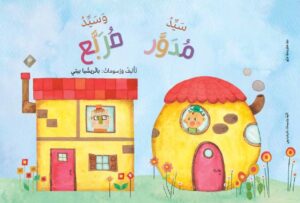 Mr. Round and Mr. Square
Mr. Round and Mr. Square 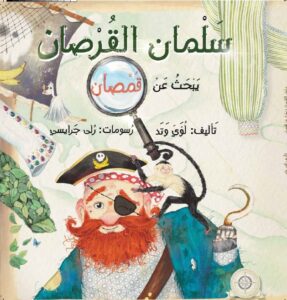 Salman the Pirate Searches for Shirts
Salman the Pirate Searches for Shirts  Where did Zaatar Disappear?
Where did Zaatar Disappear? 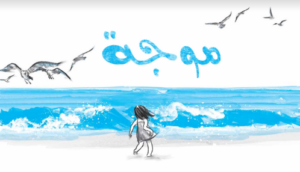 Wave
Wave 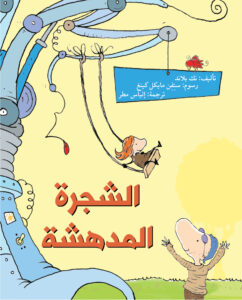 The Amazing Tree
The Amazing Tree 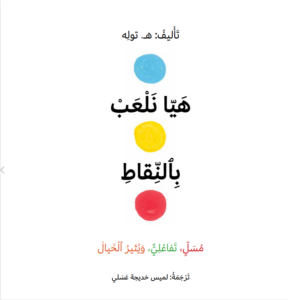 We Play with Dots
We Play with Dots 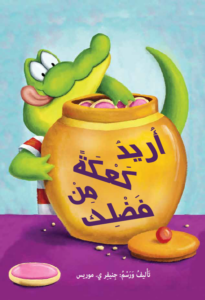 May I please have a cookie
May I please have a cookie  The Cow That Laid an Egg
The Cow That Laid an Egg 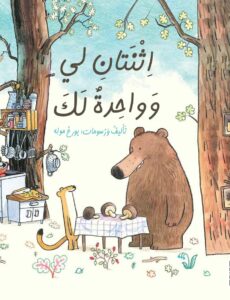 Two for Me, One for You
Two for Me, One for You 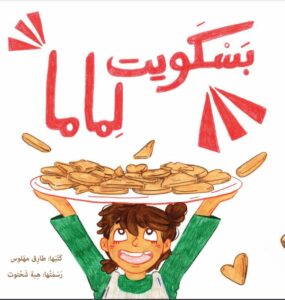 A Biscuit for Mama
A Biscuit for Mama 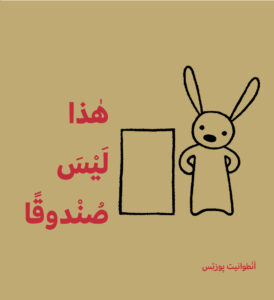 Not a Box
Not a Box 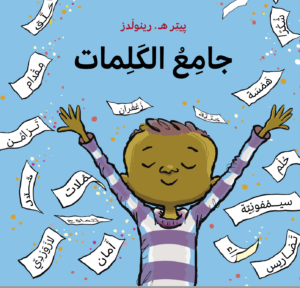 The Word Collector
The Word Collector  Crunch the Shy Dinosaur
Crunch the Shy Dinosaur 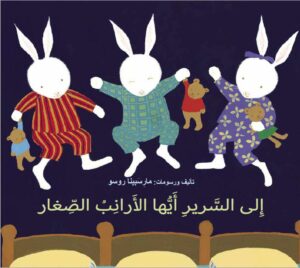 The Bunnies are not in their beds
The Bunnies are not in their beds 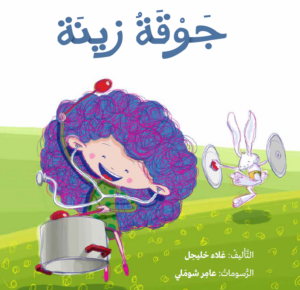 Zena’s Band
Zena’s Band 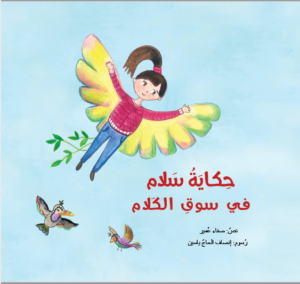 The Market of Words
The Market of Words 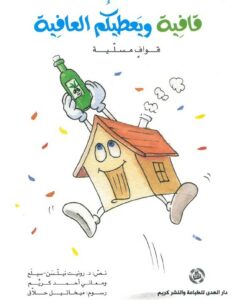 Enjoyable Rhymes
Enjoyable Rhymes 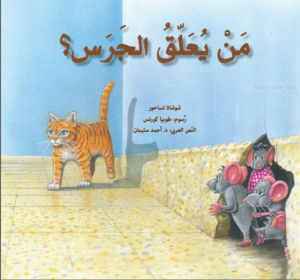 Who Will Hang the Bell
Who Will Hang the Bell 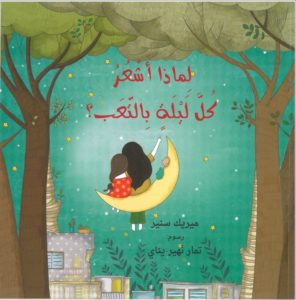 Why Am I Tired At Night?
Why Am I Tired At Night?  My Grandma Doesn’t Hear Me
My Grandma Doesn’t Hear Me  When I Paved the Sea
When I Paved the Sea  I Want to Dance
I Want to Dance 
